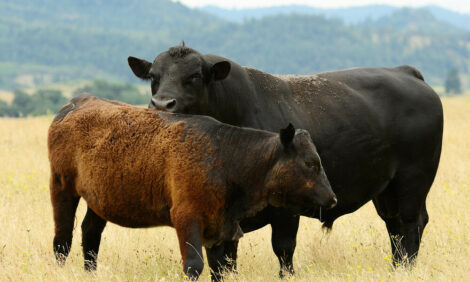



Liver Fluke Infection Levels Rising
UK - Surveillance figures collected by SAC Consulting Veterinary Service (a division of SRUC) show a high level of liver fluke infection in both sheep and cattle throughout Scotland.It continues the steady increase of the harmful parasite in recent years. SRUC is warning all livestock farmers of the threat to their animals.
While of no risk to the human food chain, the small flat liver flukes cause cattle or sheep to lose condition and can sometimes result in sudden death. The life cycle of the parasite Fasciola hepatica includes a mud snail in which it multiplies and which thrives in wet, poorly drained pasture. With a mild winter and a cool and exceptionally wet summer conditions this year have been ideal for the snail and the parasite.
Stock are infected as they graze and the parasite migrates to the animal’s liver where it damages tissue. The parasite also makes other diseases, like Black’s Disease, more likely. SRUC experts are recommending that all cattle and sheep at risk of liver fluke disease should be treated in October and January with a flukicide product effective against immature and adult flukes, and are vaccinated against Black’s Disease.
“In some areas out-wintered animals may need additional treatments between October and January”, says Auchincruive based Dr George Mitchell, of SAC Consulting Veterinary Services. “We recommend farmers seek veterinary advice if unsure and investigate all cases of sudden deaths in sheep or cattle this autumn by post mortem examination.”
Where sheep and cattle are not thriving SRUC suggests farmers investigate using individual or bulk liver fluke egg detection tests and/or blood tests. With liver fluke on the rise SRUC also recommends they monitor their farm level of liver fluke regularly and have liver fluke egg detection tests carried out on faeces samples from mid-January. Data available from abattoirs is also very useful.
While SRUC researchers and vets have been monitoring fluke levels for many years, they have recently been able to use UK climate change models to help predict where and when the conditions favouring the fluke and its host snail are likely to occur far further into the future. Their long term predictions indicate infection will be a far greater threat in areas where rainfall and winter temperatures are predicted to increase. This is because at their larval stage in snails liver fluke develop rapidly at temperatures above 10 degrees C.
In simple terms this means additional threats to the west coast of Britain and western Wales in particular. In addition the milder winters will increase the survival of larvae and extend the problem from a seasonal to an all year round threat. These are serious threats given a rise in the number of flukes resistant to existing treatments.
TheCattleSite News Desk


